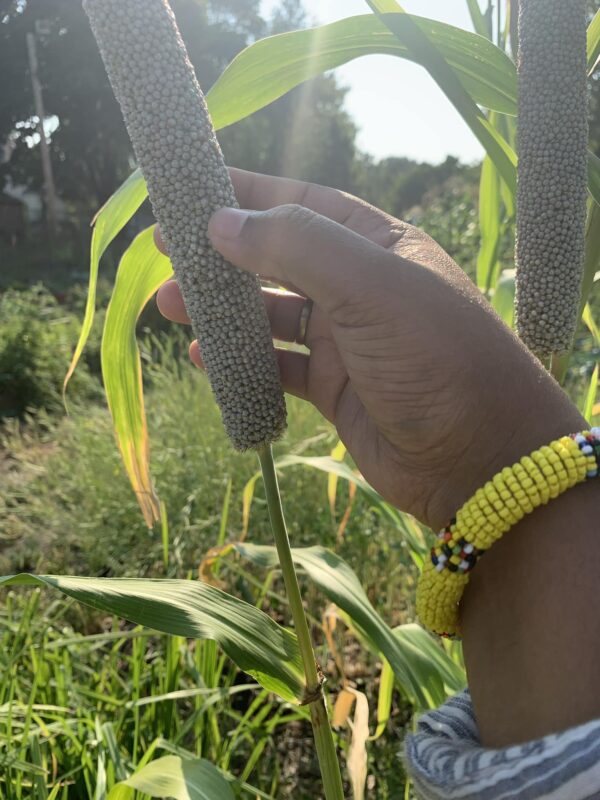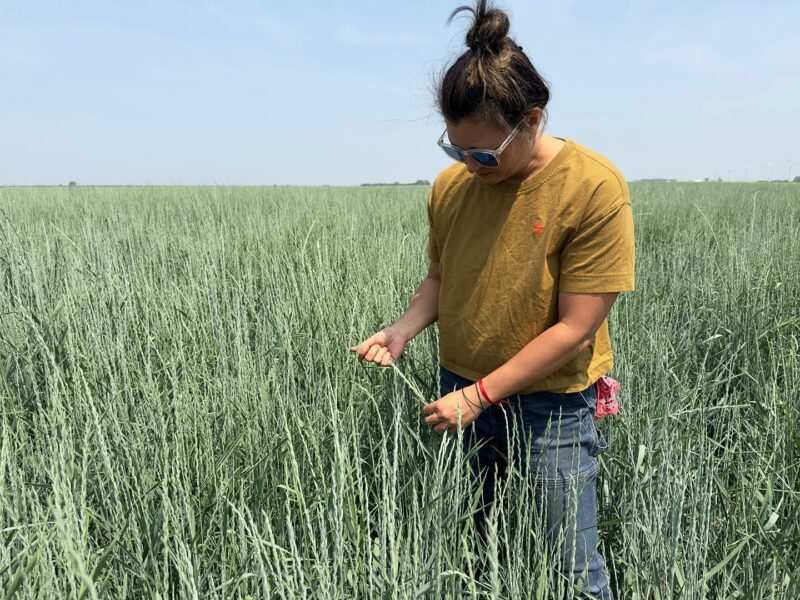With an eye toward climate resiliency and new markets, Climate Land Leaders Naima Dhore and Wendy Johnson are diversifying their farming operations with small grains. For Naima, millet represents a return to a cultural food that is suited to grow in a changing Minnesota climate. For Wendy, Kernza holds great potential as a perennial crop but needs a market to be viable for farmers. Here’s more in their own words:

Naima shares: “Over the years I’ve gravitated toward growing crops native to my country using regenerative practices that protect our soil and water. These practices have been in place for a very long time – allowing the land to work for you, taking what you need and not more than that. It’s so important when we think about land usage to remember we’re utilizing the land as a community and to think about profitability and sustainability alongside biodiversity and investing in our community.
“I’m excited to continue trialing millets this year. Millet is a staple food back home in Somalia. I was drawn to growing millet because I want to serve it to my kids, and I’m thinking about what we can grow for the community as the climate is changing. Millet doesn’t require a lot of water once established, it’s resilient and low maintenance, it can grow in soil you’re rejuvenating – also, have you ever seen a field of foxtail? It’s so beautiful!”

Wendy shares: “Kernza [is] a perennial grain and forage crop developed by The Land Institute with deep root systems like native prairie grasses with a grain that can be harvested multiple times from only one planting. The grazing potential is enormous in what is looking to be a drought here in northeast Iowa, a place that historically receives ample rain. We have received 1/2” of rain since May 1 when historically our rains come consistently in the spring.
“With climate change, our normals have disappeared and farmers, consumers, food businesses and the entire food system supply chain inbetweeners need to rethink how to not only be more resilient but be able to pivot. Do I see as a farmer that our Springs are drier and our Falls our wetter? Yes. Am I able to pivot to grow other crops that are better for our new climate? I am. But are they supported? No. And what do I mean by that? No crop insurance, no market, no infrastructure, and no consumer awareness.
“Our national food system is so incredibly set up for corn, soybeans and wheat from the grain to the chaff to the fuel to the food products. Billions of dollars if not trillions pumped into it for a vertically integrated system. But what they have all ignored is climate change. They don’t include it in as a variable, a very powerful and increasingly dominant variable. So as farmers, we continue to grow what is supported even when we know it’s the wrong decision. And unfortunately we all as taxpayers pick up the bill for more increasing drought, flooding and powerful storms.
“Does this Kernza I’m holding have a market? No, not yet. But there is hope because all it takes is some ingenuity, simple infrastructure and mad marketing skills (and budgets) to make it. And if Kernza can lift off, it sets a whole new precedent for other grains and forages to take hold as well. Kernza needs more than a moment, it needs consistent and viable support from consumers, food and beverage companies, distributors, government and buyers.”